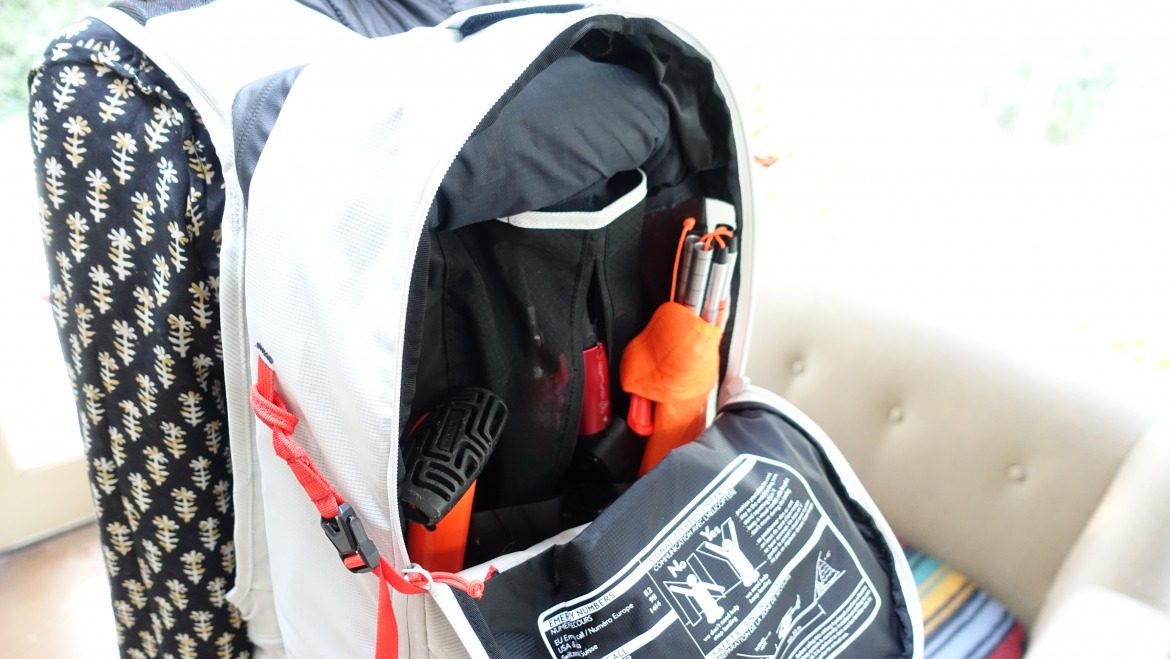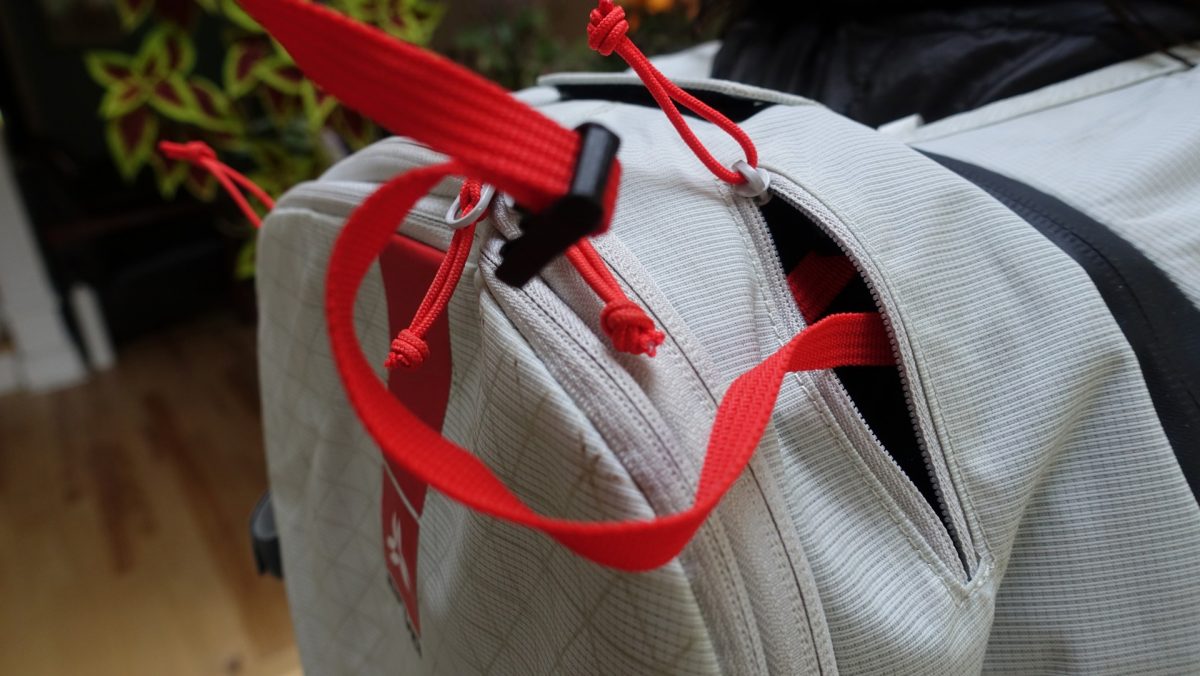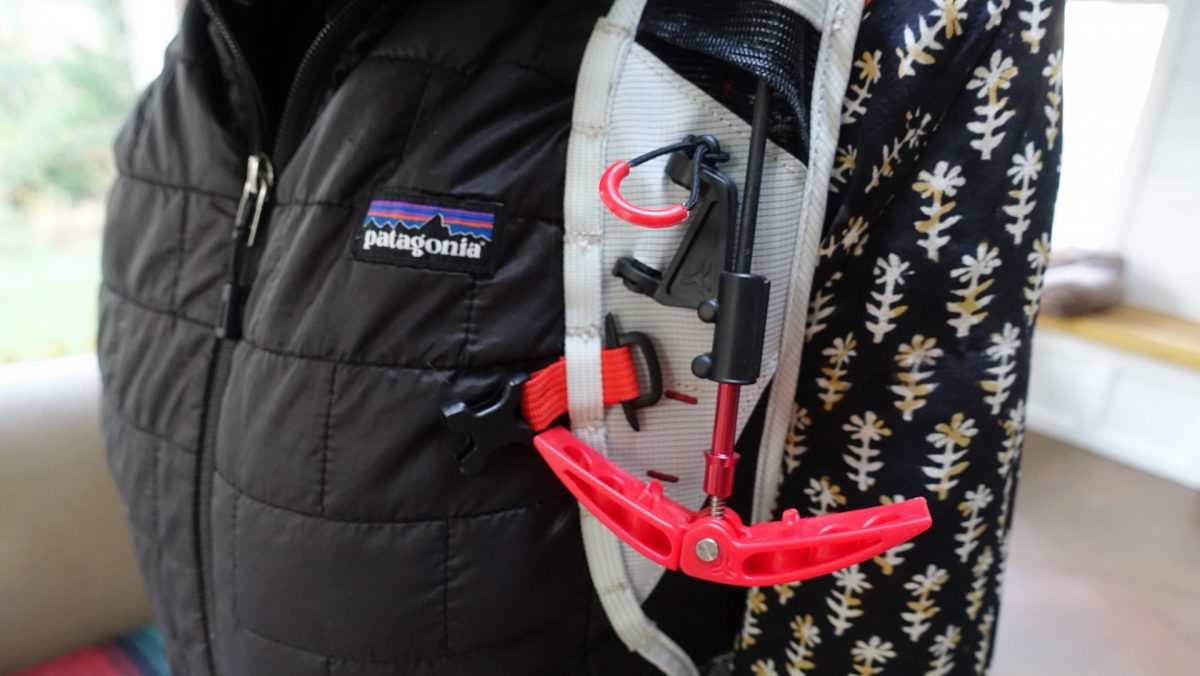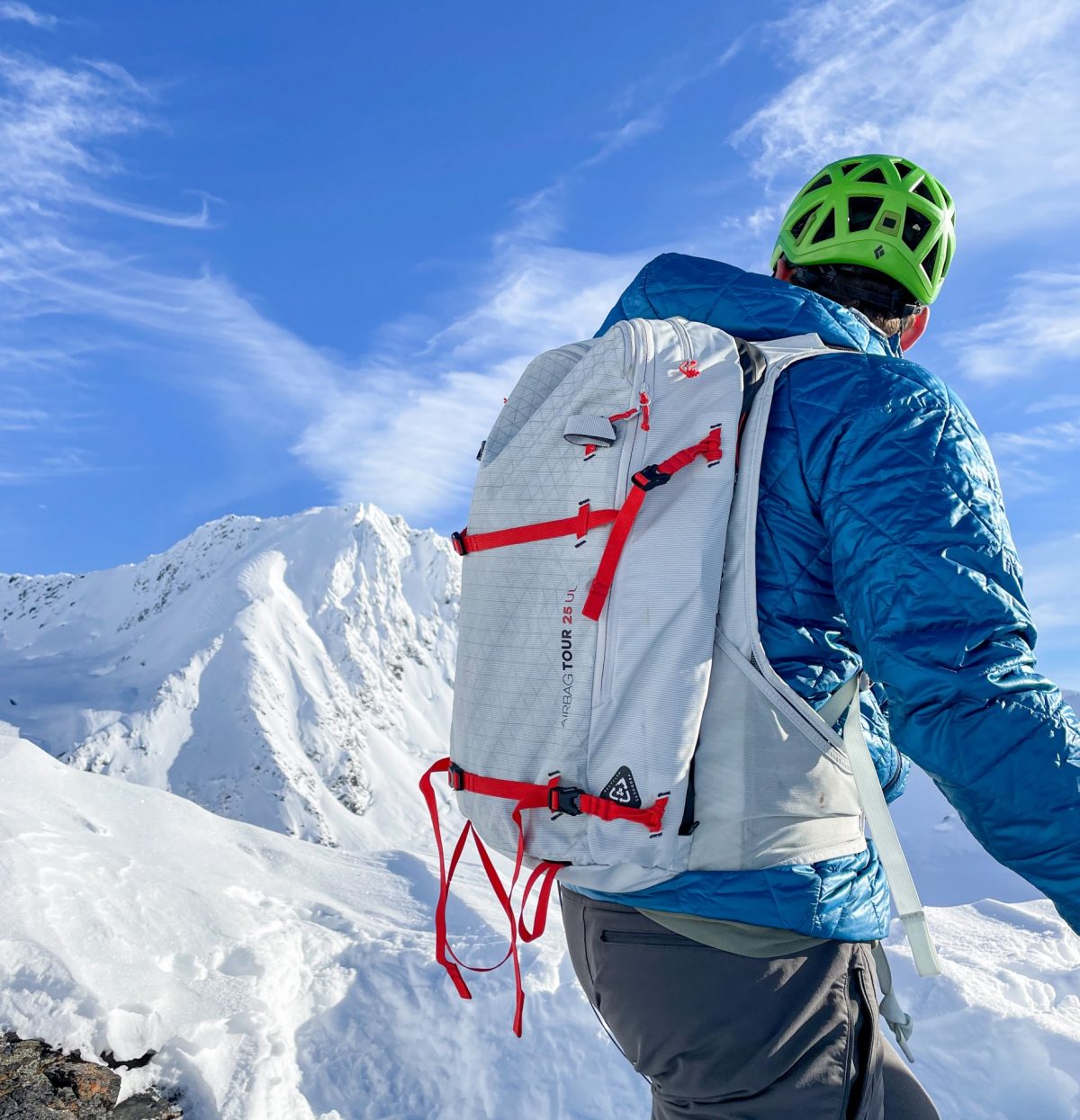
The ARVA Reactor Tour UL 25 airbag pack integrates a feature set designed for the on-the-go backcountry tourer and a reliable airbag. Photo: Tom Flynn
ARVA’s Reactor Tour UL 25 airbag pack sets itself apart as a high functioning pack bundling a reliable airbag system with easy access nutrition and hydration pockets for on-the-go backcountry tourers. Alex Lee checks in with an early season first look of the Reactor Tour UL 25 from the hills above Anchorage.
Shop for the Reactor Tour UL 25
A crowd gathered on a cool fall day in 1783 to see the first human take to the sky in an untethered hot air balloon floating above Paris, France. The progenitors of the silken balloon were brothers Joseph-Michel and Jaques-Etienne Montgolfier, born in the foothills of the Auvergne-Rhône-Alpes. A two-hour drive east into the heart of the Rhône-Alpes, and today you will find the Arve Valley, the global headquarters of ARVA Snow Safety Equipment. In the village of Annecy-le-Vieux, they still make French balloons, but with a decidedly different application and far less hot air.
ARVA designs and manufactures snow safety equipment in France. In business for decades, the company still flies a bit under the radar on this side of the Atlantic. The company has an ethos of performance and reliability that stands out to me for design simplicity – I find ARVA products to make intuitive sense and cut out unnecessary doo-dads. This also means they are out front when it comes to ultralight performance gear for real-world applications. The ARVA Reactor Tour UL 25 is a fast and light avalanche airbag pack. It stands out as the lightest pack of its kind, fully capable of big days and big objectives….I gasp a bit at the utterance of “light” and “airbag” in the same sentence, but the folks at ARVA have earned it. Here are my first impressions.

The smiles are for the early season snow and a sweet feature set on a tidy little pack. The left shoulder strap includes a mesh sleeve for a soft flask. Photo: Tom Flynn
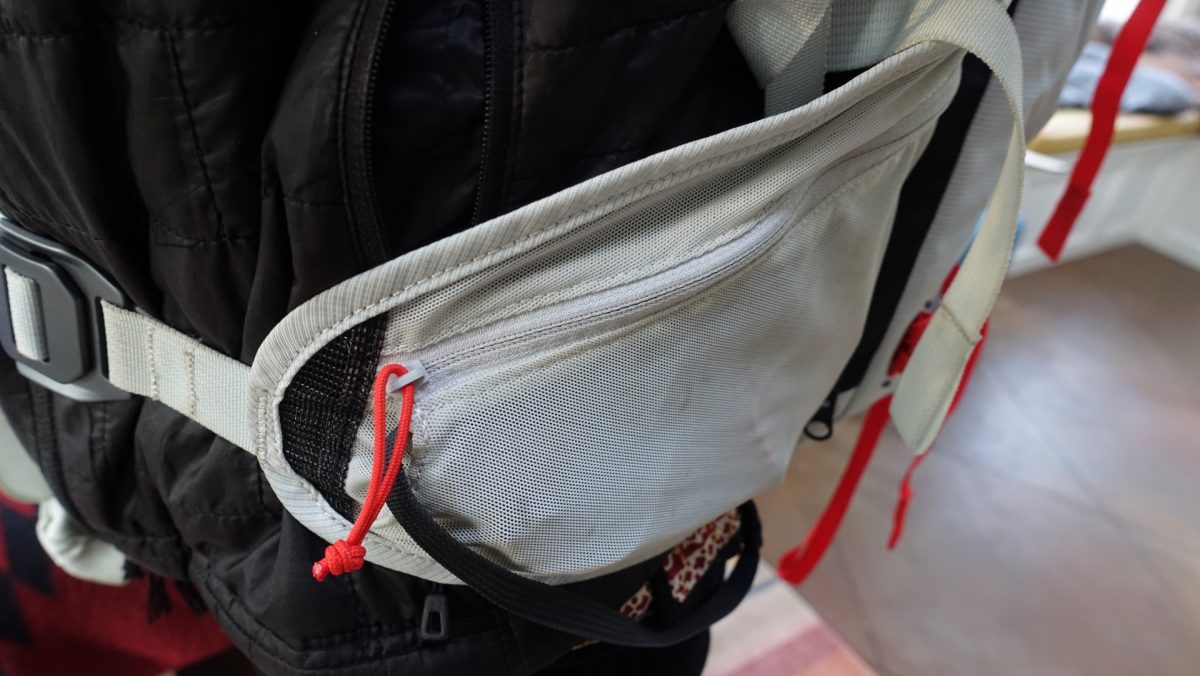
The left side of the waistbelt has a zippered stash pocket for snacks and doo-dads. The right side includes a similar, but no-zip, pocket for stashing gloves, glasses, and lip balm.
The Reactor Tour UL 25 basics:
The Reactor Tour UL 25 is a 25-liter panel style backpack that has been around for the past five seasons (though it continues to get touch-ups). The pack’s airbag emphasizes redundancy: two baffles conjoin at the top for a total of 150 liters of floatation—if one side punctures, you only lose half your air. The airbag folds into a zippered tube along the top rim and the cartridge sits in the middle of the main compartment. The airbags arc downward when deployed, to add surface area around a skier’s center-of-mass – hopefully lifting the wearer’s head.
One main compartment and a small secondary compartment store your stuff. There is a stowable side carry and removable strap for an A-frame carry, along with standard ice axe straps (you can carry two axes with A-framed skis, or one axe with the side carry). The bag retails at $730, not cheap, but still half the price of some electric packs out there. At 3.5 lbs, it is rightly marketed as the lightest dual-chamber airbag backpack ever designed.
Pack weight with full canister: ~1980g.
Canister Weight: 630g.
Soon to be available carbon canister weight: 365g.
Canister: available separately.
Price: $729.95.
Price for canister (steel): $175.00.
Features: Quick access pockets for gloves, glasses, water, other doo-dads, pack-away helmet carry.
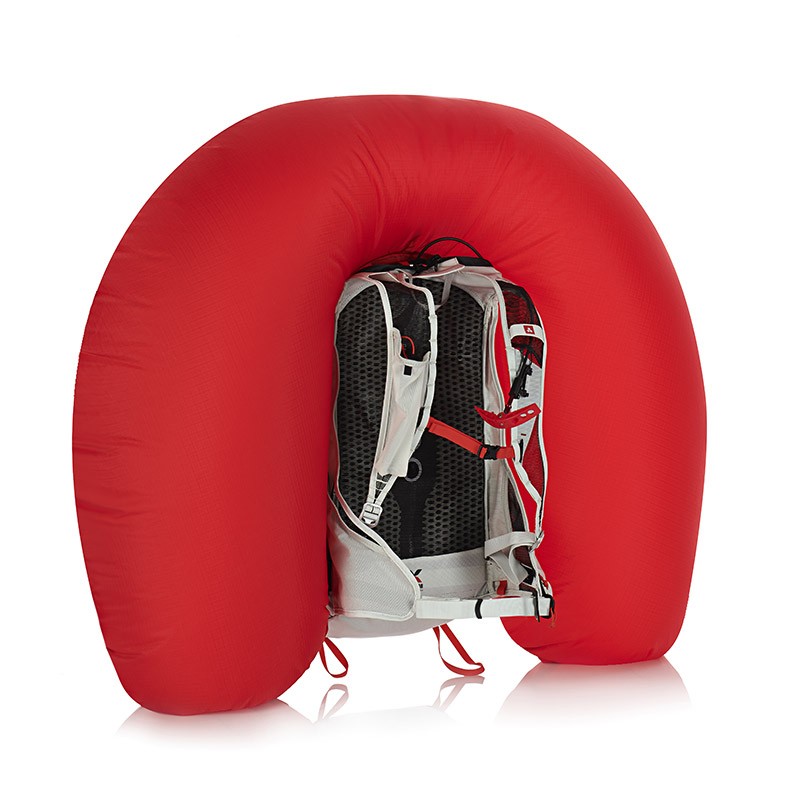
The ARVA Reactor UL 25 with a deployed airbag. The pack’s airbag emphasizes redundancy: two baffles conjoin at the top for a total of 150 liters of floatation—if one side punctures, you only lose half your air. Photo: ARVA
Deeper Thinking about Avalanche Airbags
Avalanche airbags have been around since the 1970s and commercially available since the 1980s (I believe with the original ABS hitting the market in 1985). Slow improvements in the storage, triggering, deployment, and air source (cannister or battery) through the 1990s and early 2000s slowly moved avalanche airbags from skin track oddity to the safety mainstream. Airbags may not yet be as ubiquitous as the beacon, shovel, probe, but they now sit solidly on the shortlist for risk reduction along with helmets, radios, and satellite messengers. If you’re new to avalanche airbags, the idea is simple: with the inflation of a wearable airbag, your weight stays the same, but your surface area and volume increase, meaning that you end up with a reduction in overall density. Lower density objects “float” higher in the moving snow of an avalanche.
I have been ambivalent about airbags for quite a while. I still have a first generation BCA Float in the garage, a heavy and somewhat clunky pack that is more than a decade out of date–I rarely carry it, when I do, I usually regret it, but, alas, sometimes I feel rather exposed thinking about the pack sitting there under the tool bench while standing atop flutings of steep snow. My mixed feelings on early experiences with the pack boil down to two factors, usability and perception. Usability has greatly improved across the board in all avalanche airbags as the slow creep of technological innovation reaches deeper into the backcountry niche. Weight and bulk have lingered, but this latest iteration from ARVA feels like a slimmed-down alpine pack that really butters my croissant. That’s one of my excuses gone.

Roman Dial heading up the early season skinner. We have no FOMO here at WildSnow, only joy that others are finding early season joy on Crow Pass. Photo: Alex Lee.
The “perception problem” boils down to a question of risk assessment. I have long been wary of any equipment that can lead rise to “helmet courage,” or the increased acceptance of objective hazard/overestimation of one’s ability in the face of objective hazard [the term’s origin obviously derived from an increased willingness to huck one’s meat off of stuff when wearing a helmet]. I have had more than one experience on top of a ski line hearing someone say, “hey, you’ve got an airbag, why don’t you go first.” This behavior is plain and simple reckless. Airbags should be used if you plan to be in avalanche terrain, not as a tool to encourage riding in any particular conditions. This isn’t controversial, but I imagine many of you have heard the same things atop avalanche slopes out there too.
We humans are bad at separating our efforts to mitigate risks from our decisions to take on risks. This has personally become less of a factor, frankly, as I have gotten older, bailed more, and settled into a crew of decision makers I am comfortable with. [I also just had a kid, which has completely changed how I think about risk, but that’s a topic for another post]. With this in mind, the numbers just don’t lie—airbags can and do save lives. So I guess that’s the other excuse gone. I am at least trying to don the airbag as much as I can this year.
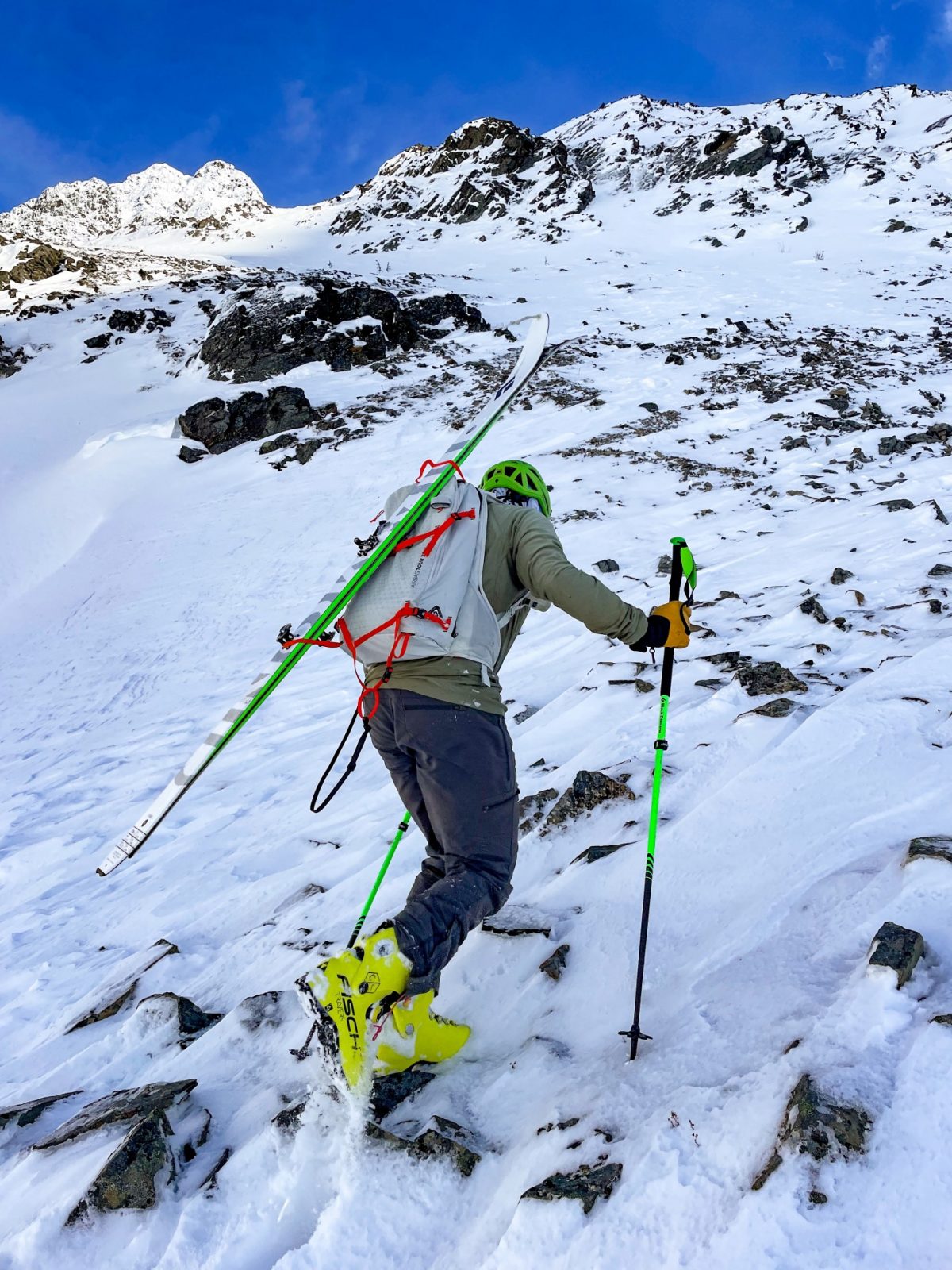
The author is moving light and fast (ask his partners) while using the pack’s side carry for skis. The pack can also carry in A-frame style and is kitted to carry a snowboard. Photo: Tom Flynn
ARVA Reactor Tour UL 25 in my Future
If I am going to lumber along lugging an airbag, I am glad to have the sleek Reactor Tour UL 25. I like that I will be able to ditch the Aero-Back back panel (a pseudo frame) and cut another 75 grams. I like the flexible hip belt mesh, breathable back panel, mesh pockets, and running vest style water sleeve in front. I like ARVA’s trigger stow – a heavy-duty spring disengages the trigger when folded, so you don’t accidentally discharge the bag, but one that doesn’t hide the trigger inside a zipper or under a latch. More importantly, you can dry fire the trigger with the canister out. Last year, ARVA swapped nitrogen canisters for a compact compressed air canister, making refills far easier, though it still weighs in at 630g. A carbon canister at nearly half the weight has already been spotted in Europe, and we hear it is headed state-side come December (at a mere 365g full).
I am still a bit bummed that almost all avalanche packs are panel designs, but that’s just me. The side carry is stowed in a zipper pocket – this seems like an unnecessary misuse of grams – I really wish they would just put a skimo carry on this to be honest (I know, it would get in the way of the airbag). I also tend to shred packs, almost always at the spot tech bindings rub against the back while skis are side carried (dear all pack manufacturers, reinforce this spot). This is a bigger deal with a pack that weighs so heavily on the wallet – we will see how the 330-denier nylon holds up. So much attention has been geared towards electric fan packs in the industry lately, but usability in the cold is darn high on my list of airbag necessities, and I just don’t trust battery performance yet when the temperature really drops (Alaska problems)–it’s nice to see ARVA keeping a canister set-up on the cutting edge.
If first impressions are lasting, then things are looking up for the Reactor Tour UL 25. I like the feel of this pack, it sits well. My hope with a pack like this is that I will simply forget I am carrying an airbag, and enjoy a solid mountaineering pack that has an extra line of defense when stepping out onto steep slopes.
Bonus note: The pack is made from recycled nylon.
Shop for the Reactor Tour UL 25
Dr. Alex Lee lives in Anchorage, Alaska. Alex is a professor at Alaska Pacific University, teaching philosophy and environmental studies. He also works as a sometimes guide, naturalist, writer, and photographer.

